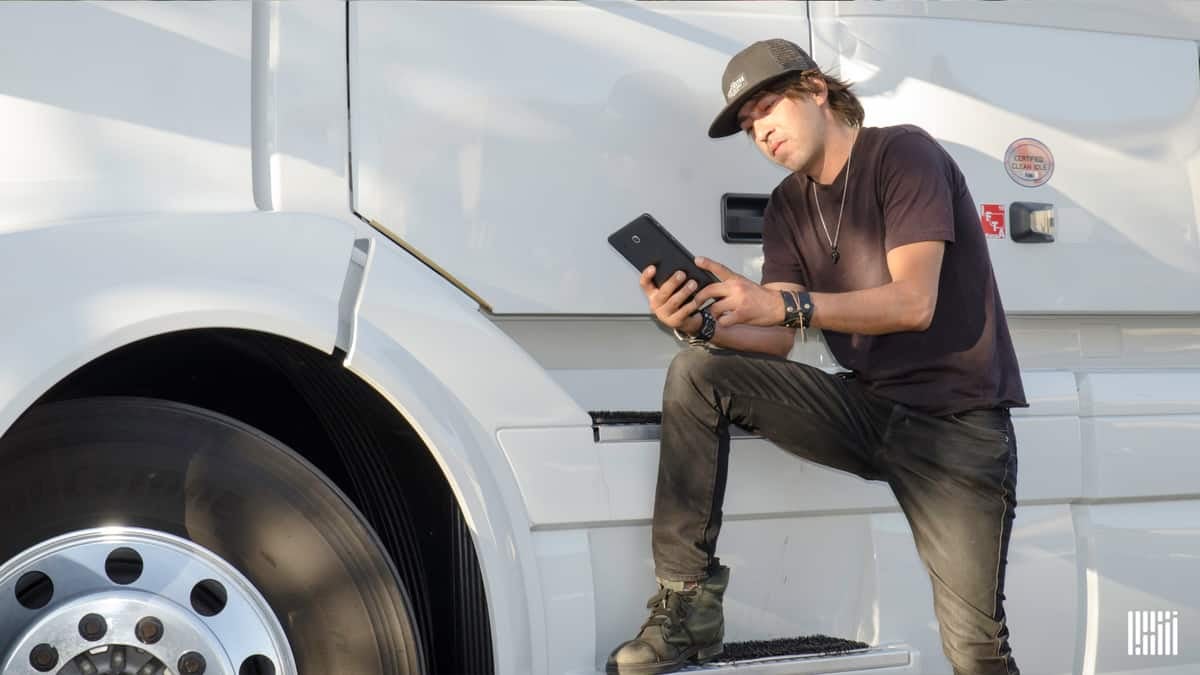For all of the advancements that mobile devices have made in the industry, according to one industry expert, there is still a long way to go.
“The percentage of utilization is small because typically companies in this space are laggards when it comes to adopting technology,” Joe Scioscia, vice president of sales for Vormittag Associates Inc. (VAI), which sells enterprise resource planning (ERP) software, explained to FreightWaves. “They fear it a little bit, maybe they fear their drivers are not as sophisticated [enough] to use this… but we are seeing more adoption.”
VAI counts shippers, most with their own truck fleets, as its primary customer. Most of its users are mid-market companies, $30 million to $500 million in revenue, and involved in wholesale distribution. VAI offers three distinct ERP solutions for hard goods, food packaging and pharmaceuticals.
While VAI’s system, like many current competitive solutions, can run on many platforms and types of devices, Scioscia said the early days offered slow uptake of the technology.
“When the device wasn’t a phone, I think people got more nervous,” he said. “Today, people know how to use mobile devices … and we’re seeing tremendous growth.”
Still, Scioscia estimates that only about 25% of companies are taking advantage of the opportunities mobile technologies offer, although most new sales now include mobile technology, he said.
Mobile device usage has advanced to become an extension of inventory management systems, Scioscia said.
“Each one of those packages are really geared to picking and shipping programs,” he noted. “The system on the warehouse side helps organize and load trucks using mobile devices that pick and load pallets.”
The devices are able to provide real-time inventory updates and track that inventory in transit. Scioscia said the real-time nature allows shippers to constantly track inventory, adjust bills as needed, and reduce waste.
“Mobile devices allow the driver to check the [number of] boxes, or short-ship boxes, and that will feed back to the ERP and say this customer needs a credit,” Scioscia said. “Once a delivery is done, the receipt is signed right on the screen. The driver can also take a picture [so they can prove delivery].”
This process used to be manual – and still is for some. Scioscia said many of VAI’s customers put extra inventory on a truck and allow the selling of that inventory by the driver. A receiver may also decide they don’t want a full shipment. Both processes create inventory issues and could lead to potential fraud, which is minimized in a mobile environment.
“Typically, in a paper-based environment, the driver goes out with an invoice and if the customer doesn’t take everything, he crosses out what wasn’t [delivered],” Scioscia said. “When the driver gets back to the office, he has to give the invoice to an internal clerk. The clerk then has to manually update the order, and may have to scan the document and upload it to the order for proof of delivery.”
Payments made to drivers are also handled easily, with the mobile device able to track payments, accept credit cards, cash or checks. The receiver would have to sign the device to confirm the amount, but that information is immediately transmitted back to the office so staff is aware of how much revenue a driver collected that day.
Automating these processes through more extensive use of mobile devices is cutting costs for shippers, reducing waste, and improving driver time, Scioscia said.
“These types of devices are really becoming more widely accepted,” he said. “The training curve on these devices is a lot less than people think because more people are using mobile devices. They control levels of productivity and the lack of errors that you get out of using this type of technology can really offer an enormous benefit.”












Capstone logistics lumper service live unload $110 dollars , at dollar general
I seen at Dollar general work visa owner operators taking pictures of their signed bills at the window and getting their next load from the cell phone